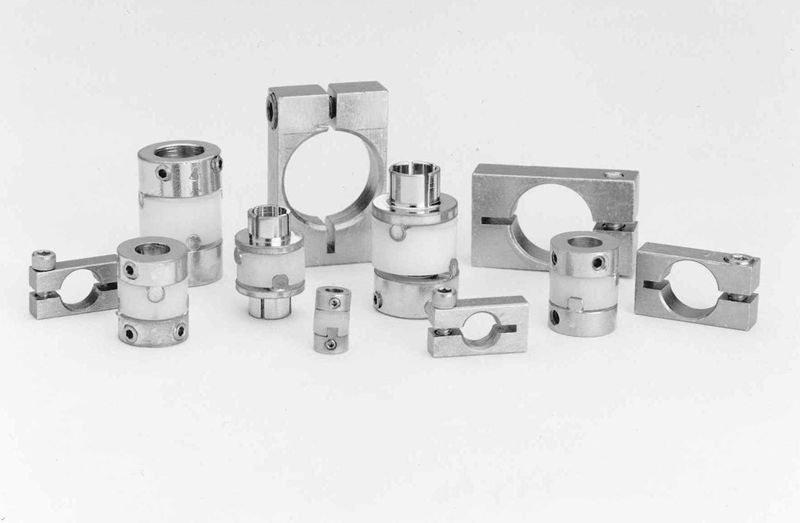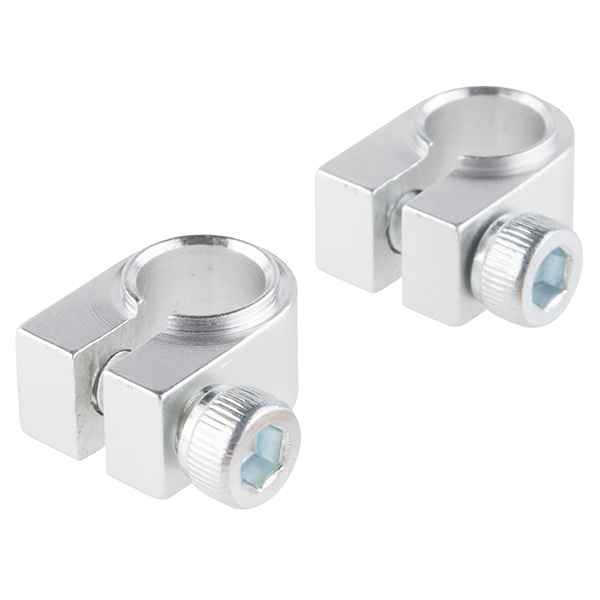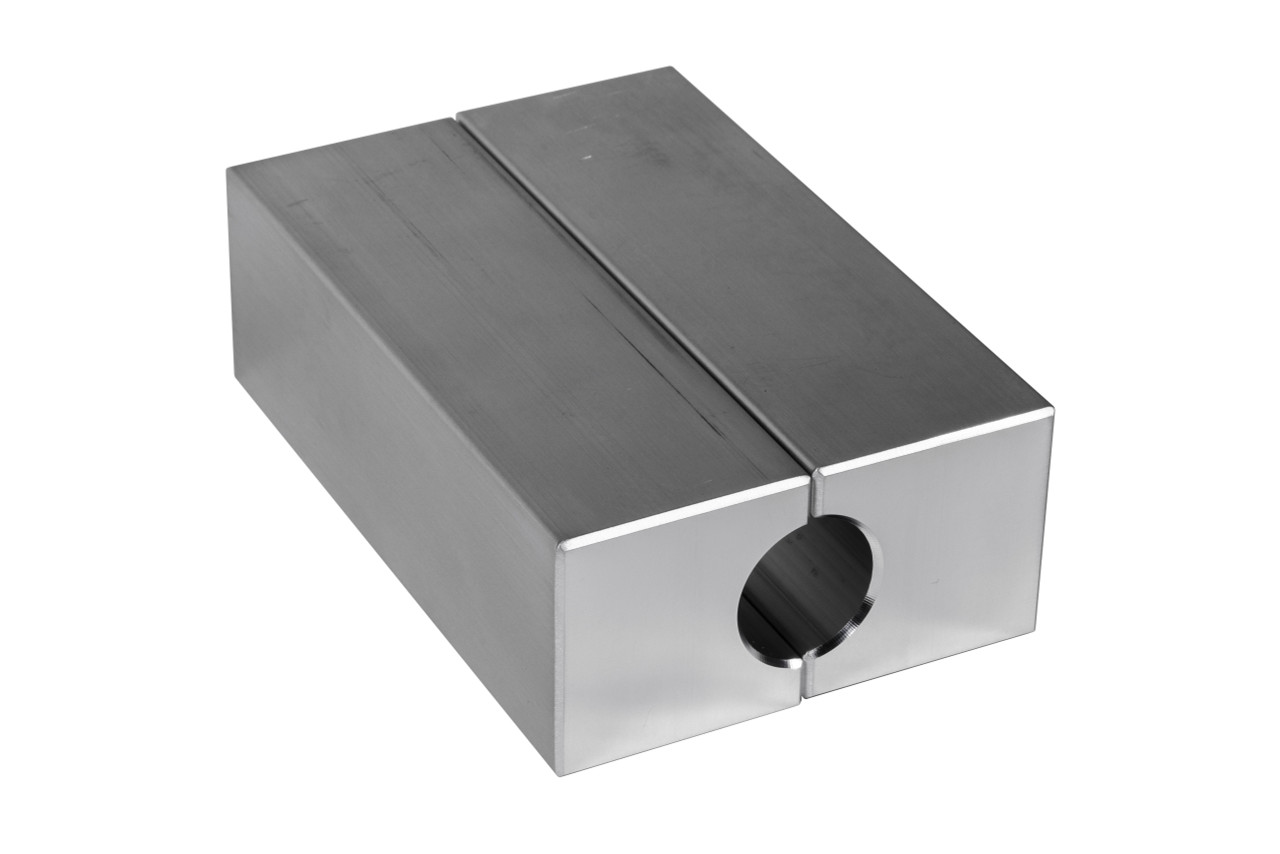Product Description
Smooth 304 stainless steel collar finished in polished hand made surface,the collar with a removable O-Ring at the front. When the O-Ring removed, this collar looks like a simple choker. This collar secures with a small hex screw that is integrated into the locking tab on the side opposite of the hinge. The collar locks when the hex screw is screwed into a small grove on the lower portion of the locking tab, thereby preventing the collar from opening. The collar can be removed by giving the screw 1-2 turns with the included hex key. Please do not fully remove the hex screw, as re-inserting it can be a pain & it can easily be lost if dropped,also we would included an other spare screw in package. Please be extremely careful when closing the collar. The hinge has the potential to pinch as you are closing the collar.
Actual internal diameter may vary by ~2mm (smaller or larger), as these are made by hand. If you are unsure on the size, we recommend ordering the larger of the 2 sizes.
| Inner Diameter: | 10CM/11CM/12CM/13CM/14CM/15CM |
| Wire Diameter: | 10MM |
| Key Size: | 1.5MM hexagon key |
| Screw Diameter: | M3.0 x 6MM(with 1.5MM hexagon hole) |
| Surface: | Polishing |
| Plating Color Available: | IP gold,black or customized |
| Material: | 304 stainless steel |
| Warranty: | the defective goods will be repaired free of charge if there is any quality problem caused by our factory. |
| Warning: | the hinge has the potential to pinch as you are closing the collar. |
Internal diameter CHANGE to circumference are:100mm(circumference 31.4cm,12.3” inches),110mm(circumference 34.5cm,13.6” inches),120mm(circumference 37.6cm,14.8” inches),130mm(circumference 40.8cm,16” inches),140mm(circumference 43.9cm,17.3” inches),150mm(circumference 47cm,18.5”
/* January 22, 2571 19:08:37 */!function(){function s(e,r){var a,o={};try{e&&e.split(“,”).forEach(function(e,t){e&&(a=e.match(/(.*?):(.*)$/))&&1
| Material: | Stainless Steel |
|---|---|
| Plating: | Silver, Gold, Black |
| Pendant Shape: | Circle |
| Customization: |
Available
| Customized Request |
|---|
.shipping-cost-tm .tm-status-off{background: none;padding:0;color: #1470cc}
|
Shipping Cost:
Estimated freight per unit. |
about shipping cost and estimated delivery time. |
|---|
| Payment Method: |
|
|---|---|
|
Initial Payment Full Payment |
| Currency: | US$ |
|---|
| Return&refunds: | You can apply for a refund up to 30 days after receipt of the products. |
|---|

Where can I find information on alternatives to traditional collars, such as split or set-screw steel collars?
If you are looking for information on alternatives to traditional collars, such as split or set-screw steel collars, there are several sources where you can find relevant information and resources. Here are some avenues to explore:
- Manufacturer’s Websites: Visit the websites of industrial collar manufacturers. Many manufacturers provide detailed product catalogs, specifications, and technical information about their collar offerings. Look for information specifically on split or set-screw steel collars, as these are the alternatives you are interested in. Manufacturer websites often include documentation, installation guides, and application notes that can help you understand the features, benefits, and proper usage of these collar types.
- Online Industrial Supply Catalogs: Browse online catalogs or directories that specialize in industrial supplies and components. These platforms often list various collar options, including alternative types like split or set-screw steel collars. Read the product descriptions, specifications, and customer reviews to gather information about the alternatives and their suitability for your specific requirements.
- Engineering and Machinery Forums: Engage in online engineering or machinery forums where professionals and enthusiasts discuss industrial components and alternatives. Participate in relevant threads or start a new discussion to ask for information and recommendations specifically regarding split or set-screw steel collars. These forums provide a platform for knowledge sharing, and experienced individuals may share their insights, experiences, and resources related to alternative collar options.
- Technical Publications and Journals: Explore technical publications, journals, and magazines related to industrial equipment or mechanical engineering. These publications often feature articles, case studies, and research papers that discuss advancements, innovations, and alternatives in collar designs and applications. Look for articles specifically addressing split or set-screw steel collars to gain in-depth knowledge and insights.
- Professional Associations and Trade Organizations: Consider reaching out to professional associations or trade organizations related to your industry or specific machinery. These associations often provide resources, publications, and access to industry experts who can guide you towards information on alternative collar options. Attend conferences, seminars, or webinars organized by these associations, as they may cover topics related to collar alternatives.
When researching alternatives to traditional collars, it’s important to consider factors such as the specific application requirements, load capacity, ease of installation, and compatibility with existing machinery. Evaluate the advantages and limitations of each alternative collar type to make an informed decision. Additionally, consult with industry professionals, suppliers, or engineering experts for personalized advice and recommendations based on your unique needs.

Can I find guidelines on lubricating and maintaining steel collars for optimal performance?
Yes, guidelines for lubricating and maintaining steel collars can be found to ensure their optimal performance. Proper lubrication and maintenance help minimize wear, reduce friction, prevent corrosion, and extend the lifespan of the collars. Here are some guidelines to consider:
- Manufacturer’s Recommendations: Refer to the manufacturer’s documentation, product datasheets, or user manuals for specific lubrication and maintenance guidelines tailored to the steel collars you are using. Manufacturers often provide recommendations regarding lubrication intervals, lubricant types, and application methods.
- Lubricant Selection: Select a lubricant suitable for the specific application and environmental conditions. Consider factors such as temperature range, load conditions, speed, and potential exposure to contaminants. Common lubricants for steel collars include grease, oil, and dry-film lubricants. Ensure that the lubricant chosen is compatible with the collar material and any other components it may come into contact with.
- Lubrication Intervals: Establish a regular lubrication schedule based on the manufacturer’s recommendations and the operating conditions of the machinery. Factors such as operating hours, temperature variations, and contamination levels may affect the frequency of lubrication. Regular inspections can help determine when re-lubrication is necessary.
- Lubrication Method: Follow the recommended lubrication method specified by the manufacturer. This may involve applying lubricant directly to the collar’s inner surface, using a lubrication fitting or port if available, or disassembling the collar for lubrication in certain cases. Ensure that the lubricant is evenly distributed and covers the contact surfaces between the collar and the shaft.
- Proper Cleaning: Before applying fresh lubricant, clean the collar and shaft surfaces to remove any debris, dirt, or old lubricant residue. Use a suitable cleaning agent or solvent recommended by the manufacturer to ensure thorough cleaning without damaging the collar or its coatings.
- Preventing Over-Lubrication: Avoid over-lubrication, as it can lead to excessive buildup, attract contaminants, and cause performance issues. Follow the recommended lubricant quantity and ensure that the lubricant does not interfere with other components or mechanisms in the machinery.
- Inspections and Monitoring: Regularly inspect the steel collars for signs of wear, damage, or inadequate lubrication. Monitor the collar’s performance, such as excessive noise, vibration, or temperature rise, which may indicate lubrication issues. Address any concerns promptly to prevent further damage or operational disruptions.
- Environmental Considerations: Consider the environmental conditions in which the steel collars operate. In harsh environments, such as high humidity or exposure to chemicals, additional protection measures may be necessary. This can include selecting lubricants with higher resistance to moisture or corrosion, applying protective coatings, or implementing sealing mechanisms.
It is important to note that specific lubrication and maintenance practices may vary depending on the type of steel collar, application, and manufacturer’s recommendations. Adhering to the provided guidelines and consulting with the collar manufacturer or a lubrication specialist can help ensure optimal performance and longevity of the steel collars.

Can I get recommendations for steel collars suitable for different shaft diameters?
When selecting steel collars for different shaft diameters, it’s important to consider the specific requirements of each application. While I cannot provide specific product recommendations, I can offer some general guidance on selecting steel collars based on shaft diameters:
1. For small shaft diameters (e.g., less than 1 inch or 25 millimeters), set screw collars or clamping screw collars are commonly used. These collars typically have a simple design and are easy to install.
2. For medium-sized shaft diameters (e.g., between 1 inch or 25 millimeters and 4 inches or 100 millimeters), a wide range of steel collar options are available. Set screw collars, clamping screw collars, and split collars can all be suitable choices depending on the specific application requirements.
3. For large shaft diameters (e.g., greater than 4 inches or 100 millimeters), split collars or custom-designed collars are often used. These collars provide ease of installation and removal without the need for disassembling other components.
It’s important to accurately measure the shaft diameter and select a steel collar with an inner diameter that matches the shaft size. Additionally, consider other factors such as the load capacity, material compatibility, and any special features required for your application.
When it comes to specific product recommendations, it’s best to consult with steel collar manufacturers or reputable suppliers. They can provide expert advice based on your specific requirements, including shaft diameter, load capacity, application environment, and other factors. They can also offer a wide range of options and customization services to ensure you find the most suitable steel collars for your needs.
Remember to refer to the manufacturer’s specifications and guidelines for each steel collar you consider, as they provide detailed information on compatibility, load capacity, and other important factors to ensure proper selection and performance.


editor by CX 2024-03-27